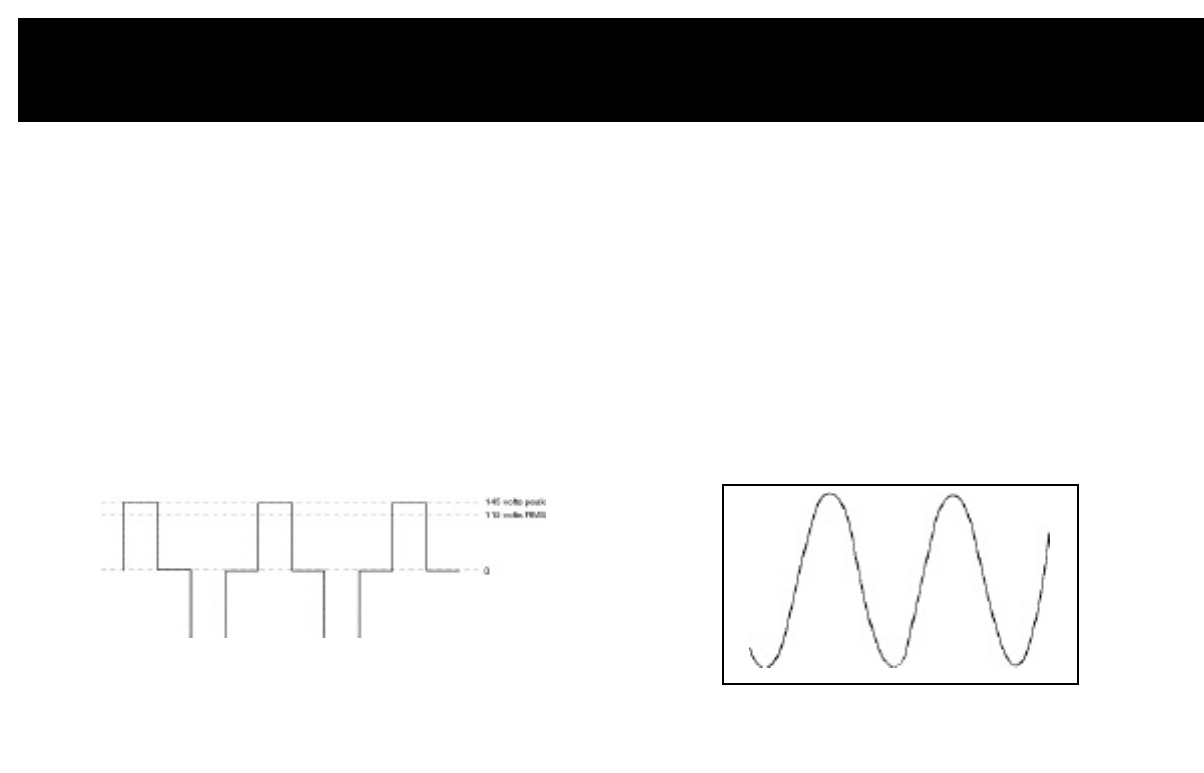
17
16
OPERATING PRINCIPLES
OPERATING PRINCIPLES
majority of AC voltmeters are calibrated for RMS voltage
and assume that the measured waveform will be a pure sine
wave.
Consequently, these meters will not read the RMS modified
sine wave voltage correctly and, when measuring your
WHISTLER inverter output, the meters will read about 20 to
30 volts too low.
To accurately measure the output volt-
age of your inverter, use a true RMS reading voltmeter
such as a Fluke 87, Fluke 8060A, Beckman 4410, Triplett 4200
or any multimeter identified as "True RMS."
For more information on inverters see our Inverter FAQ
page at www.whistlergroup.com/faq-inverters.asp
A true sine wave typical of home AC outlet.
For You Technical Types.
1. Basic Operating Principles:
WHISTLER inverters work in two stages. During the first
stage, the DC to DC converter increases the DC input voltage
from the power source (e.g. a 12 volt battery) to 145 volts DC.
In the second stage, the high voltage DC is converted to 110
volts (60 Hz AC) using advanced power MOSFET transistors
in a full bridge configuration. The result is excellent overload
capability and the capacity to operate difficult reactive loads.
The output waveform resulting from these conversions is a
"quasi-sine wave" or a "modified sine wave" as shown on the
following page.
This stepped waveform is similar to the power generated by
utilities and has a broad range of applications.
The modified sine wave produced by
your WHISTLER Inverter
The modified sine wave produced by your Whistler inverter
has a root mean square (RMS) voltage of 110 volts. The

















